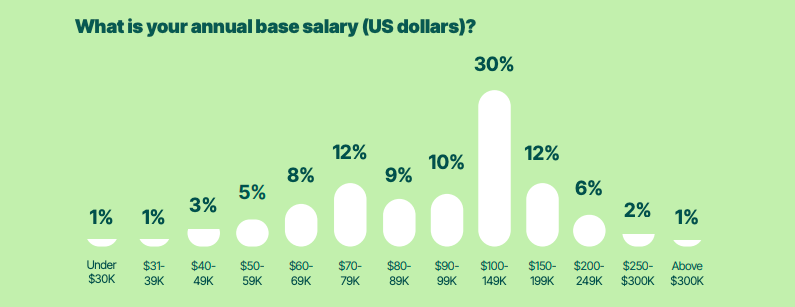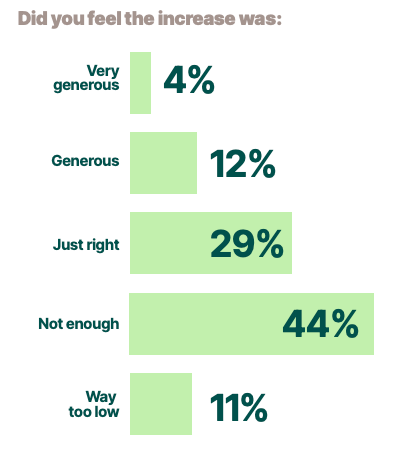By the Numbers: How to make the most money in comms
Insights from Ragan & PR Daily’s Salary and Workplace Culture Survey.

With all the ways the world of work has shifted business priorities over the past few years, it should come as no surprise that investments in the communications function have changed, too.
Ragan & PR Daily’s 2024 Salary and Workplace Culture Survey, we polled comms pros to find out how much they make.
The findings revealed that some interesting findings about salaries, bonuses, and how employees feel about them. The data also shows big differences in wages and bonuses between generational demographics, meriting a closer look.
The deeper details of comms salaries and raises
The survey polled more than 500 comms professionals, with a plurality of respondents working in a corporate environment (48%). Broken down by seniority, 30% of respondents were manager-level employees, 19% were specialists at 19% and 14% were directors.
The survey data also reported that 53% of communicators earned in six-figure salaries. Additionally, 78% of survey respondents reported receiving a pay raise in the last year, which is a higher rate than in 2023 (75%) or 2022 (71%), showing an upward swing in compensation for comms pros.
Who’s most likely to receive a raise
The higher up the organizational chart an employee sits, the more likely they are to see a raise. The C-suite, managers, and specialists all reported receiving pay bumps at a rate of over 80%, while associate-level employees and account supervisors, saw pay raises at a rate of just under 60%.
Overall, 55% of respondents found that their raises were too low, while just 16% thought they were generous or very generous.
However, not all respondents received a raise to begin with.
Thirty percent of Gen Z respondents reported no salary increase, while a further 10% of Zoomers reported that their pay raise was less than the previous year. Compare that to Millennials (10%), Gen Xers (6%), and Boomers (1%), who each saw rates with no salary increase in the single digits.
Economic headwinds impact everyone in the workforce, but these numbers show that younger comms employees are less likely to see compensation increases year-over-year. This should cause all communicators working within the HR function to assess how raises fall along generational lines, and what it means for your employer brand. This trend can make it hard to recruit and retain top young talent, but it’s also a tough place to build from when attempting to foster a positive work culture.
Meanwhile, 84% of men reported receiving a salary increase, while 77% of women reported the same. This is a reminder that, even though the communications function is largely populated by women, the gender pay gap still exists.
A deeper dive into bonuses
Bonuses are another major factor in whether an employee either joins or stays in an organization. 38% of respondents reported a raise that was larger than the one they got the year before, but 50% stated they either got a bonus that was smaller or the same amount as the previous year.
Additionally, the survey showed a split in feelings about bonuses— 39% saw their bonus as generous in amount, while 36% felt it was too low.
While people might have a lot of reasons for showing up to work every day, compensation is a major, if not the biggest part of the puzzle. With the knowledge of how their employees feel about their compensation and a read on how things are trending, communicators are empowered to work with leaders and make strategic decisions about salaries and bonuses that benefit both the employer and employee in the long run.
For more information and insights, check out the executive summary of our Salary and Workplace Culture Survey.
Sean Devlin is an editor at Ragan Communications. In his spare time he enjoys Philly sports and hosting trivia.









